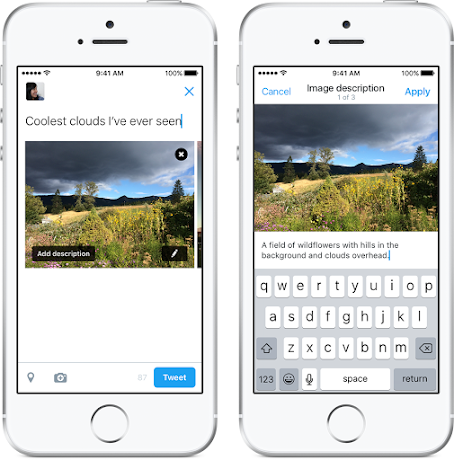Starting today, people using our iOS and Android apps can add descriptions — also known as alternative text (alt text) — to images in Tweets. With this update, we’re empowering everyone to ensure content shared on Twitter is accessible to the widest possible audience.
Enable this feature by using the compose image descriptions option in the Twitter app’s accessibility settings. The next time you add an image to a Tweet, each thumbnail in the composer will have an add description button. Tap it to add a description to the image. People who are visually impaired will have access to the description via their assistive technology (e.g., screen readers and braille displays). Descriptions can be up to 420 characters.
Todd Kloots
A good step forward for accessibility, although I have to wonder how many users will take the time to enable the feature and add descriptions to images as they post. After all, many site admins and CMS ignore alt-descriptions and those are people who should understand the importance of alternate text for screen readers and search engines alike. I don’t expect more from casual Twitter users.

Also, I find it highly ironic how image descriptions can be up to three times longer than the tweet containing the image. The 140-character limit feels increasingly artificial und unnecessary – even as many vocal users resist every change Twitter is considering out of misguided nostalgia.
Update: And, just a couple of days later, Facebook released its own accessibility feature for images, but with a much broader scope. Instead of relying on people to describe photos manually, Facebook uses image recognition algorithms to automatically assign keywords to images uploaded to the site. Even if not as reliable as human input, it will reach far more users and enable them to make more sense of online content. Sadly for Twitter, another area where Facebook is years ahead…
Post a Comment